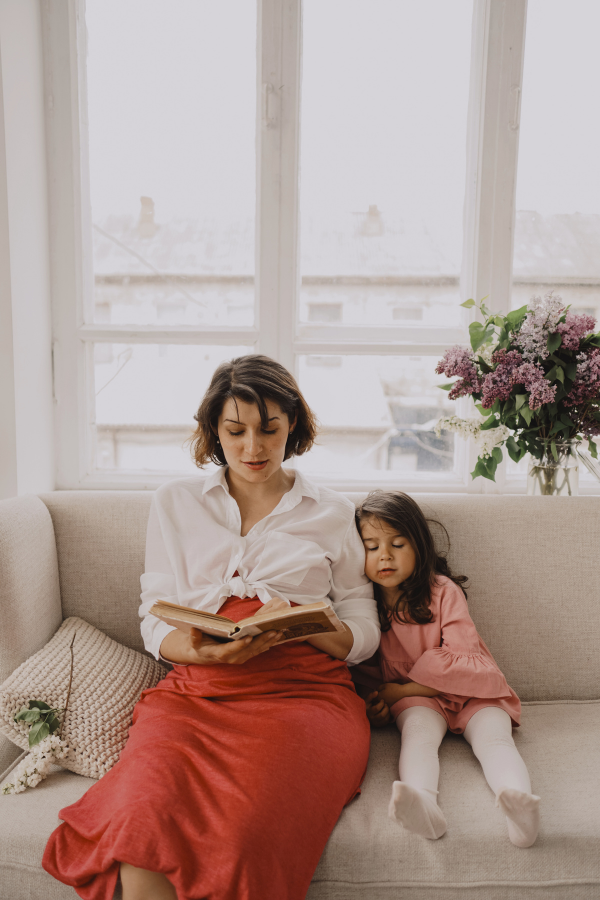
Values-Based Budgeting: Designing a Financial Life That Reflects Your True Priorities
Summary
Value-based budgeting helps women running creative businesses align their finances with their core values, such as family well-being, creativity, and financial independence. Instead of focusing on restrictions, this approach empowers you to prioritize what truly matters, balancing personal and professional growth while caring for loved ones. By creating a values-driven financial plan, you can thrive creatively and build long-term security for your family.
Reflection Questions
- What are your top 3-5 core values, and how do they influence your financial decisions?
- Are there areas in your current budget where you’re spending money that doesn’t align with your true priorities?
- How can you involve your family in discussions about financial goals and values to ensure everyone’s needs and dreams are supported?
Journal Prompt
Take a moment to reflect on your current financial habits. How well do they reflect your values and priorities? Write down 3 ways you can adjust your budget to better support your personal and professional goals, while also meeting the needs of your family.
You’re running a creative business while caring for your family as a Sandwich Generation woman. We know how all-consuming that can be. Between caring for your kids, managing a household, supporting your business, and possibly supporting elderly parents, it’s easy to feel like you’re being pulled in multiple directions—especially when it comes to money management. That’s where value-based budgeting can be a game changer.
Instead of feeling overwhelmed by competing priorities, this approach helps you align your financial decisions with what truly matters to you—whether that’s growing your business, ensuring your family’s well-being, or securing your own financial freedom. By focusing on your values, you can create a financial plan that lets you pursue your creative passions while providing for your loved ones and building long-term security.
What Is Values Based Budgeting?

Spending money isn’t just about necessities and saving money isn’t just about squirreling dollars away in case of emergency. It can impact your life (and those of others around you) in more profound ways. Value-based budgeting is a financial approach that emphasizes aligning how you save and spend money with your deepest values and personal priorities.
Instead of following a rigid plan where every dollar is restricted, this method allows you to focus on what truly matters—whether that’s building your creative business, providing for your family, or nurturing your own self-care. It empowers you to make intentional financial choices that support your goals and your vision for the future, rather than simply cutting costs or meeting arbitrary savings targets.
Traditional Budgeting vs. Value-Based Budgeting
Traditional budgeting tends to focus on limitations—cutting spending here, saving there—with little flexibility for personal growth or passions. It often feels like a constant battle to meet financial goals, leaving little room for creativity or joy.
Value-based budgeting, on the other hand, encourages you to prioritize where your money goes based on what’s important to you. Rather than feeling guilty about spending, you can feel good knowing that your financial decisions are aligned with your life’s most important values. It’s not about what you can’t have; it’s about making sure your financial plan reflects who you are and what you care about most.
Why Value-Based Budgeting Works for Creative Women
For women running creative businesses, value-based budgeting is an ideal way to maintain balance between nurturing your passion and fulfilling family responsibilities. As a creative entrepreneur, you need flexibility to invest in your business while also making sure your family’s needs are met.
Value-based budgeting allows you to allocate funds in a way that supports both your business and your loved ones, whether that means setting aside money for childcare or creating a “creativity fund” to fuel your artistic ventures. This approach ensures you aren’t just surviving financially but thriving, both creatively and personally.
Identifying Your Core Values and Financial Priorities

Before you can design a financial life that truly reflects what matters to you, it’s important to take a step back and identify your core values. These values are the foundation for every financial decision you make. For women balancing creative businesses, family, and caregiving, key values might include creativity, family well-being, flexibility, and financial independence.
By clarifying what drives you—whether it’s the freedom to spend more time with your loved ones or the ability to invest in your creative passions—you create a roadmap that helps guide your financial decisions with intention and purpose.
Key Questions to Guide Your Money Mindset
Once you’ve reflected on your core values, it’s time to ask yourself a few important questions to really hone in on your financial priorities. What motivates you on a daily basis? Is it providing a secure future for your children, or is it growing your business so that it can thrive long-term?
What kind of lifestyle do you want to create for yourself and your family? These reflective questions will help you gain clarity on the type of financial life you want to build and ensure that your financial choices align with both your short-term needs and long-term goals.
Actionable Tip: Create Your Values List

Now that you’ve thought about your personal values and priorities, it’s time to actually practice values-based budgeting. Start by creating a list of 3-5 core values that will serve as the guiding principles for your financial decisions. Write them down and keep them visible as you make budgeting choices.
For example, if flexibility is one of your values, you might decide to put more money into an emergency fund so you have more breathing room when unexpected costs arise or when you need to take a mental health break from work. If creativity is a top priority, you could set aside funds specifically for personal or business growth projects. By grounding your financial plan and budget categories in your values, you’ll stay focused on what’s most important to you.
Fuel your creative fire & be a part of a supportive community that values how you love to live.
subscribe to our newsletter
*please check your Spam folder for the latest DesignDash Magazine issue immediately after subscription

Sample List for Your Budget Based on Values
- Family Well-Being – Prioritizing the health, happiness, and financial security of your family, including children, a spouse or partner, and potentially elderly parents. This value might lead you to focus on ensuring that your loved ones have what they need, whether it’s saving for education, healthcare, or future care for aging parents.
- Creativity – Nurturing and developing your creative passion, whether it’s through your business or personal projects. This could mean allocating resources for professional growth, investing in new tools or skills, or simply making time and space to explore your creative interests.
- Financial Independence – Building a strong financial foundation that gives you the freedom to make decisions without relying on others. For many women, this might include saving for retirement, building an emergency fund, or paying down debt to create a sense of stability and autonomy.
- Flexibility – Having the ability to adapt to changing circumstances, both in your business and personal life. This value could drive you to budget with a bit of flexibility, such as creating savings cushions for unexpected costs related to caregiving, or investing in systems that give you more control over your time.
- Self-Care and Wellness – Prioritizing your own health and well-being to stay mentally and physically fit for your family and business. This might inspire you to budget for things like health insurance, wellness activities, or taking time off to recharge, ensuring you can continue to show up for yourself and others in the long term.
Designing a Budget Around Your Priorities

Once you’ve identified your core list, the next step is designing a values based budget that supports them. Start by aligning your income with your priorities. For example, if family well-being is a top value, ensure a portion of your income goes toward savings for your children’s education, healthcare, or creating a financial safety net.
If creativity is a key focus, allocate funds to grow your business, whether that’s investing in new tools, marketing, or skill development. By consciously assigning money to these values, you ensure that your financial decisions actively support what matters most, helping you to grow both personally and professionally.
Managing Financial Obligations While Honoring Creativity
Balancing the financial demands of childcare, parental care, and household expenses can be daunting, but it doesn’t mean your creativity needs to take a backseat. Start by assessing your non-negotiable expenses, like mortgage payments, utilities, and caregiving costs, then see how you can allocate funds to fuel your creative pursuits.
Look for opportunities to trim unnecessary expenses and redirect that money toward things that support both your family and your business. By carefully managing your obligations, you can make sure that your creative growth remains a priority while still meeting the needs of your loved ones.
Actionable Tip: Use a Percentage-Based Budget
One of the most effective ways to ensure your budget reflects your values is by using a percentage-based approach. A simple model to try is allocating 50% of your income to essential needs (e.g., household bills, grocery budget, caregiving costs), 30% to goals and dreams (e.g., business investments, education savings, or creative projects), and 20% to self-care and financial flexibility (e.g., health, wellness, or emergency savings). This method allows you to easily see how much money is going toward your core values and ensures a balanced approach that supports both your family and your creativity.
Involving Your Family in Value-Based Budgeting

One of the most effective ways to ensure that your financial goals align with both your personal and family priorities is by involving your loved ones in the budgeting process. Start by having open conversations about your collective values and long-term goals, such as saving for education, planning for future caregiving needs, or investing in your creative business.
By discussing these priorities as a family, you can work together to build a financial plan that meets everyone’s needs while supporting your individual dreams. It’s essential that each family member feels heard and that the budget reflects shared values, creating a sense of unity and teamwork around financial decisions.
Sharing Financial Responsibility
Balancing personal and family goals while sharing financial responsibility can be tricky, but it’s important to make sure that individual priorities don’t get lost. One approach is to designate specific categories in your budget for both personal and family goals.
For example, while a portion of your income may go toward household needs and family savings, it’s equally important to set aside funds for your own creative growth or self-care. This helps prevent feelings of resentment or burnout and ensures that both family and personal goals are nurtured.
Clear communication and transparency about financial contributions and expectations are key to maintaining a healthy balance.
Actionable Tip: Schedule Family Money Talks
Regular family money talks can be a great way to keep everyone on the same page and ensure that financial priorities stay aligned. Schedule a time each month to sit down with your partner or family members to discuss any new goals, review your budget, and adjust as needed.
These talks create opportunities to reassess family priorities, celebrate financial wins, and make changes to the plan if necessary. Regular communication keeps financial stress at bay and ensures that everyone is working toward the same goals while still supporting individual dreams.
Join us for the focus & Flex challenge
Final Thoughts on Values-Based Budgeting

Value-based budgeting can be such a powerful tool for women balancing the demands of running a creative business, caring for their families, and securing their financial futures. By aligning your finances with your core values, you ensure that your spending supports what truly matters—whether that’s creativity, family well-being, or long-term security.
This approach allows you to maintain financial flexibility while still investing in your personal and professional growth. Ultimately, value-based budgeting empowers you to make intentional financial decisions that keep your priorities at the forefront, giving you the freedom to thrive creatively and financially.
Actionable Tips for RIGHT NOW!

Ready to take control of your financial life? Start by setting aside 30 minutes this week to reflect on your core values and how they align with your current spending habits. Create a simple values list that will guide your financial choices moving forward.
Next, open a separate account for a “creativity fund” and begin contributing to it regularly, even if it’s just a small amount. Finally, schedule a family money talk to discuss and realign shared financial goals, making sure that everyone’s priorities are being honored. These small steps can set you on the path to financial clarity and success.
Do you have budgeting tips to share? List them in the comments below!








